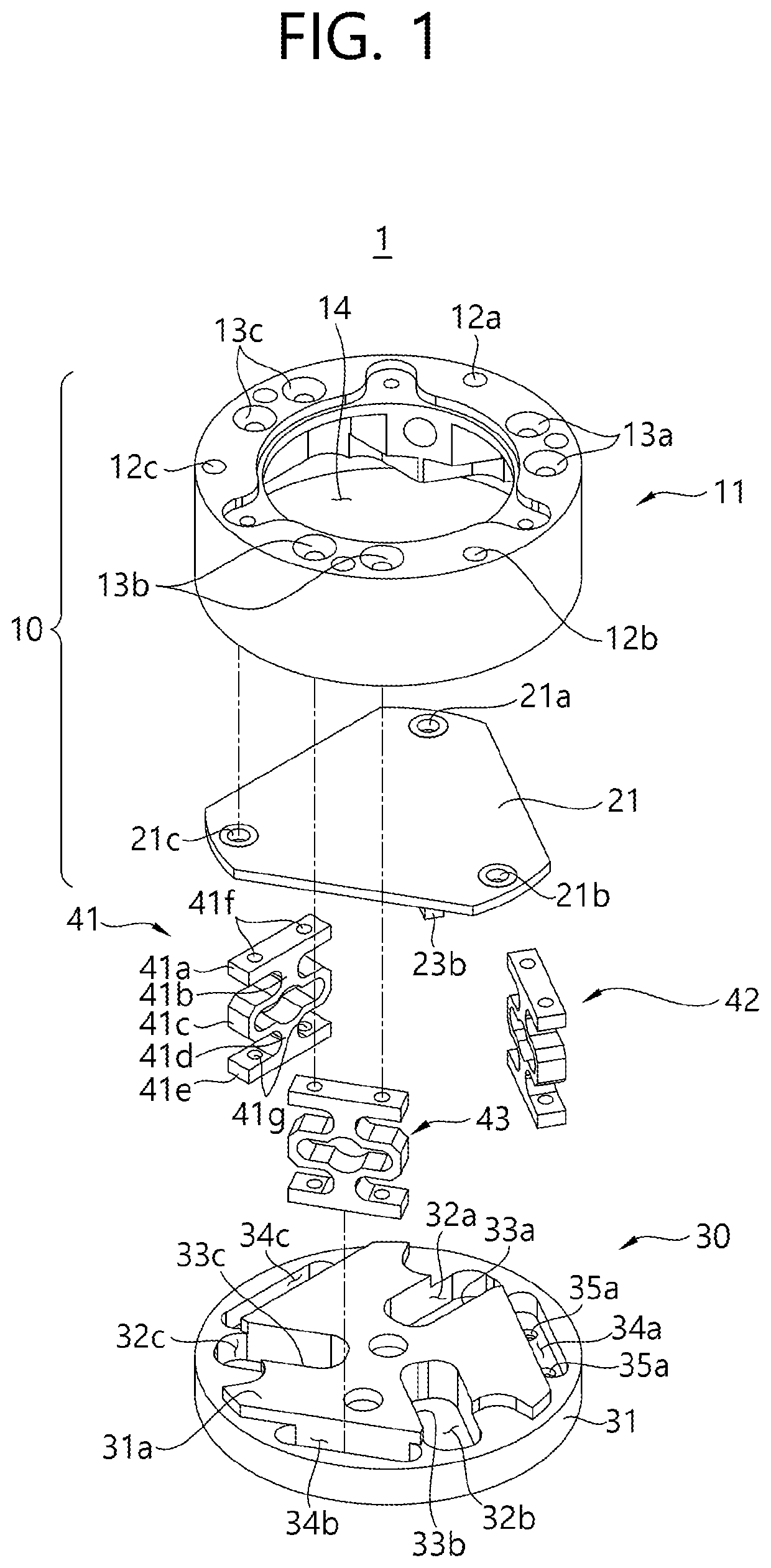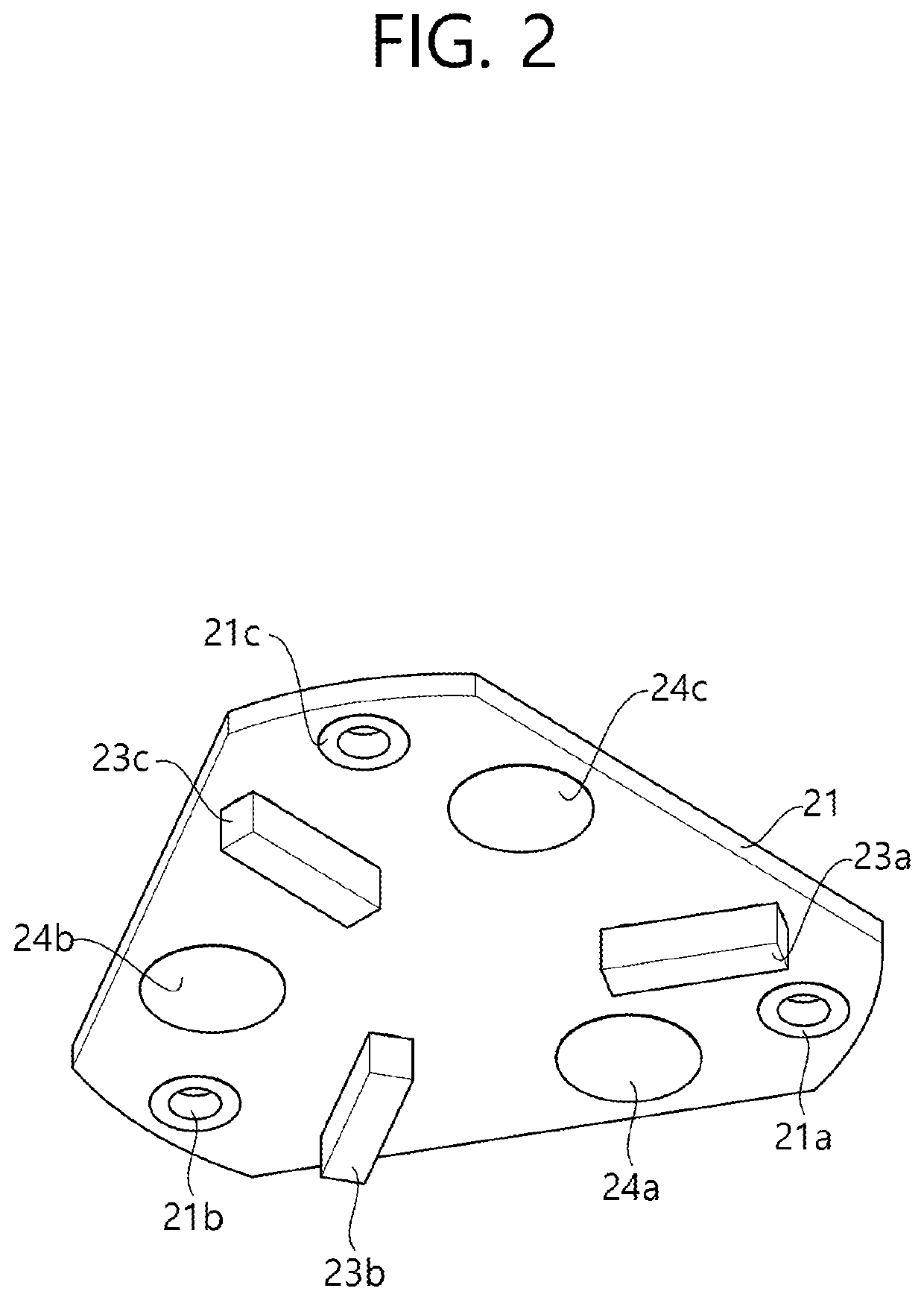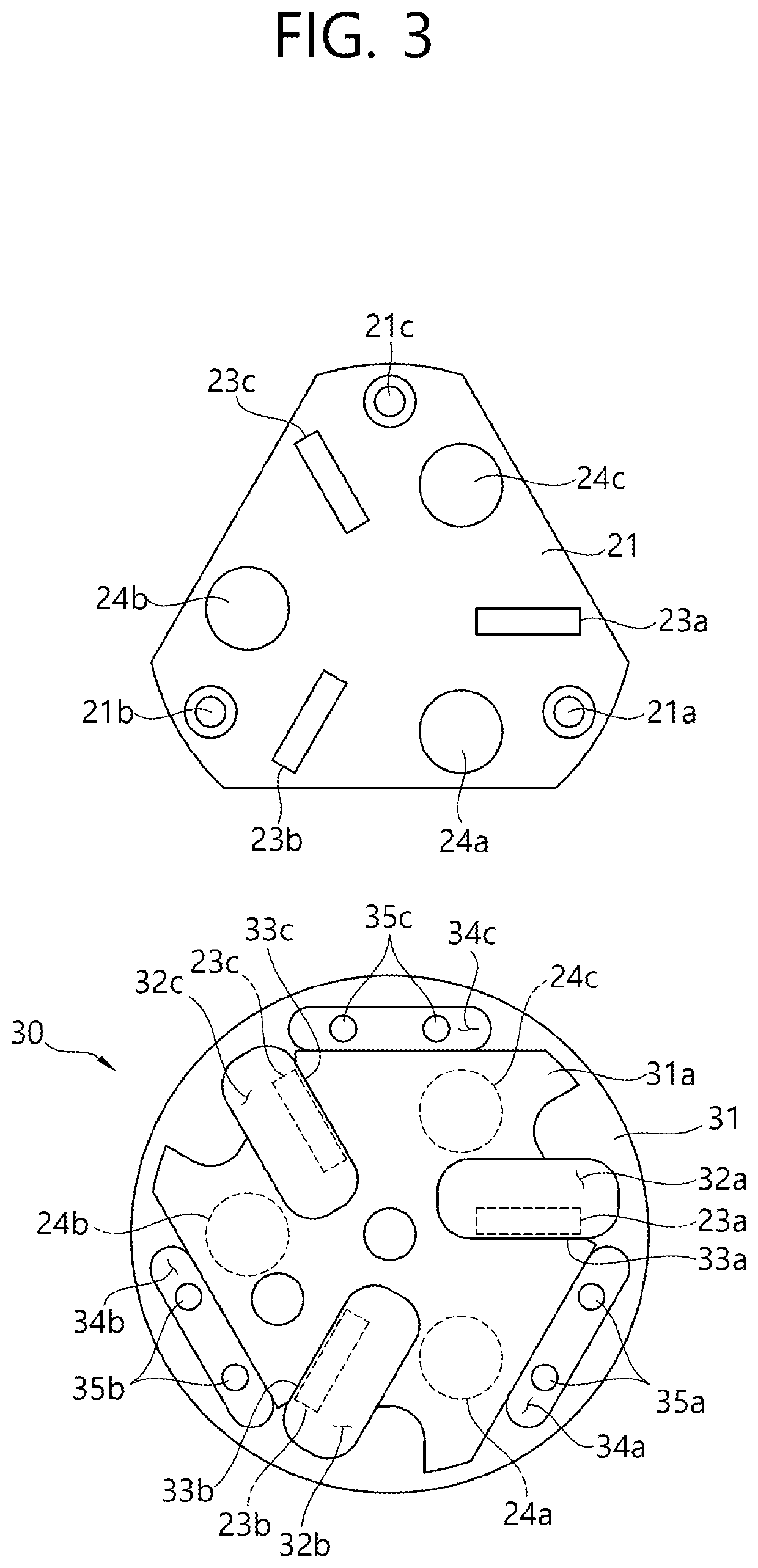Capacitive sensor
a capacitive sensor and capacitive technology, applied in the field of capacitive sensors, can solve the problems of increasing manufacturing difficulty, manufacturing cost, easy damage of adhesives, etc., and achieve the effects of simple structure, improved durability, and reduced manufacturing difficulty
- Summary
- Abstract
- Description
- Claims
- Application Information
AI Technical Summary
Benefits of technology
Problems solved by technology
Method used
Image
Examples
first embodiment
[0045]As shown in FIG. 1, a capacitive sensor 1 according to the present invention includes an upper block 10, a lower block 30 and elastic supports 41, 42 and 43.
[0046]The upper block 10 includes a housing 11 and a printed circuit board (PCB) 21.
[0047]The housing 11 is formed such that it has an accommodating space 14. The accommodating space 14 may accommodate the PCB 21, the elastic supports 41, 42 and 43 and at least a part of the lower block 30.
[0048]The housing 11 may be combined with the lower block 30. In this case, the housing 11 may be combined with the lower block 30 in such a manner that the bottom of the housing 11 is in contact with the top of a base plate 31 of the lower block 30 or surrounds the side of the base plate 31.
[0049]A plurality of first upper block fixing holes 12a, 12b and 12c and a plurality of first elastic support fixing holes 13a, 13b and 13c may be formed at the top of the housing 11.
[0050]The first upper block fixing holes 12a, 12b and 12c are space...
second embodiment
[0145]As a modified example of the capacitive sensor 2 the upper block 210 and the lower block 230 may be arranged such that the positions thereof are reversed. That is, the lower block 230 in FIGS. 12 and 13 is reversed 180 degrees to serve as an upper block and the upper block 210 is reversed 180 degrees to serve as a lower block.
[0146]In this case, the plurality of lower vertical electrodes 233a, 233b and 233c and the plurality of lower horizontal electrodes 232a, 232b and 232c shown in FIG. 12 serve as upper vertical electrodes and upper horizontal electrodes. In addition, the upper vertical electrodes 223a, 223b and 223c formed on the side of the plate 221 serves as lower vertical electrodes and one side of the plate 221 serves as a lower horizontal electrode.
[0147]That is, in the capacitive sensor according to the modified example, the upper vertical electrodes are formed to protrude from the bottom surface of the upper block and the lower vertical electrodes are formed on th...
third embodiment
[0150]As shown in FIG. 14, the upper block 310 of the capacitive sensor 3 according to the present invention includes a plurality of upper vertical electrodes 323a, 323b and 323c and a plurality of upper horizontal electrodes 324a, 324b and 324c formed to protrude from the bottom surface of an upper plate 321.
[0151]In addition, the lower block 330 includes a plurality of lower vertical electrodes 333a, 333b and 333c and a plurality of lower horizontal electrodes 332a, 332b and 332c formed to protrude from the top surface of a base plate 331.
[0152]As shown in FIG. 15, the plurality of upper vertical electrodes 323a, 323b and 323c and the plurality of lower vertical electrodes 333a, 333b and 333c partially overlap and are disposed to face each other without being in contact with each other. In addition, the plurality of upper vertical electrodes 323a, 323b and 323c are not in contact with the base plate 331 and the plurality of lower vertical electrodes 333a, 333b and 333c are not in ...
PUM
| Property | Measurement | Unit |
|---|---|---|
| capacitances | aaaaa | aaaaa |
| force | aaaaa | aaaaa |
| torque | aaaaa | aaaaa |
Abstract
Description
Claims
Application Information
 Login to View More
Login to View More - R&D
- Intellectual Property
- Life Sciences
- Materials
- Tech Scout
- Unparalleled Data Quality
- Higher Quality Content
- 60% Fewer Hallucinations
Browse by: Latest US Patents, China's latest patents, Technical Efficacy Thesaurus, Application Domain, Technology Topic, Popular Technical Reports.
© 2025 PatSnap. All rights reserved.Legal|Privacy policy|Modern Slavery Act Transparency Statement|Sitemap|About US| Contact US: help@patsnap.com



